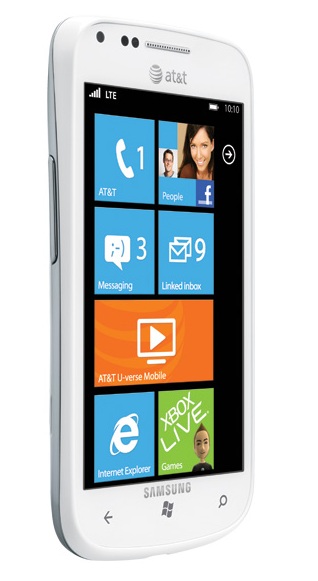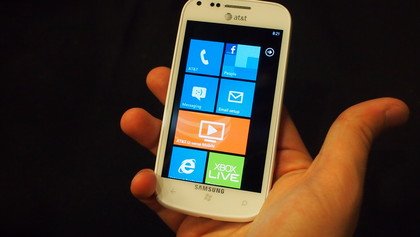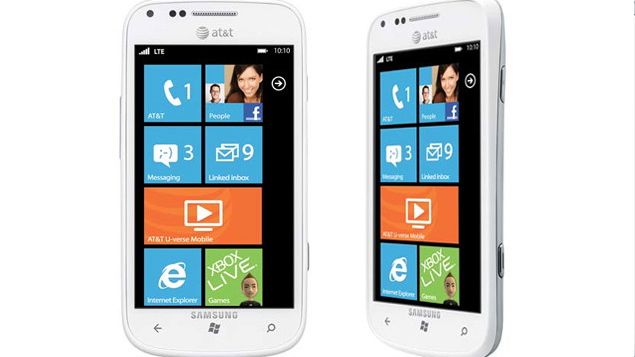Why you can trust TechRadar
The Samsung Focus 2 features the Windows Phone Mango, version 7.5 of Microsoft's mobile operating system.
The lock screen displays the time and date in large lettering, with room underneath to alert users of calendar notifications, emails, or messages. The most recent unread text message gets a short preview on the lock screen, but emails only show up as a simple notification.

Small icons for battery life, cellular, and Wi-Fi signal strength are also shown at the top of the lock screen. Sliding the lock screen up will fully wake the phone, and reveal the meat of Windows Phone through its tile interface.
The large brightly colored tiles offer a unique experience compared to the page-heavy interface on Android or iOS. Tiles are arranged in two columns, with the occasional app, like the calendar and AT&T's pre-installed U-verse app, taking up an entire row. Tiles cannot be resized.
Tiles are easy to move around by holding down and dragging them to the desired row or column. Any app can be easily pinned and unpinned as a tile, even pre-installed apps, which makes the home screen customizable to display all of your apps or only the apps you want to immediately access.
Apps that are not pinned as tiles are still on the phone, and can be accessed in a side menu by swiping left or tapping an arrow on the upper right.
Many tiles provide live information, such as how many text messages and emails are unread, your Facebook photos, or album covers for the music as it plays. The live information is helpful to quickly gauge what is happening in each of your apps without requiring you to actually load each one individually. Live information isn't universal to all apps though, with strange omissions like the lack of a default weather app with at a glance forecasts.

How useful those tiles actually are will depend on what you want out of a phone. The average user will appreciate the clean organization of the tiles and helpful live information. However, power users will likely find themselves scrolling a lot to find the information they want, since the large tiles only leave room for eight app tiles on-screen at any given time.
The touch buttons under the screen provide useful secondary functions as well. Holding the back button allows you to see all apps running in the background, though not all apps for the OS support multitasking. Holding the Windows button on the other hand opens the voice command menu.
While smartphones are increasingly getting outfitted with dual and quad-core processors, Windows Phone 7.5 has hardware restrictions that limit the Focus 2 to a single-core 1.4GHz Snapdragon S2 processor with 512MB of RAM. Samsung makes excellent use of those slim specs though, with zippy performance without any noticeable hiccups outside of the occasional third-party app.
